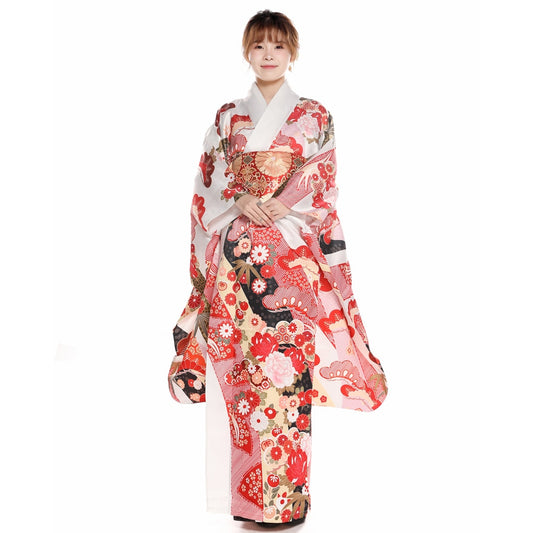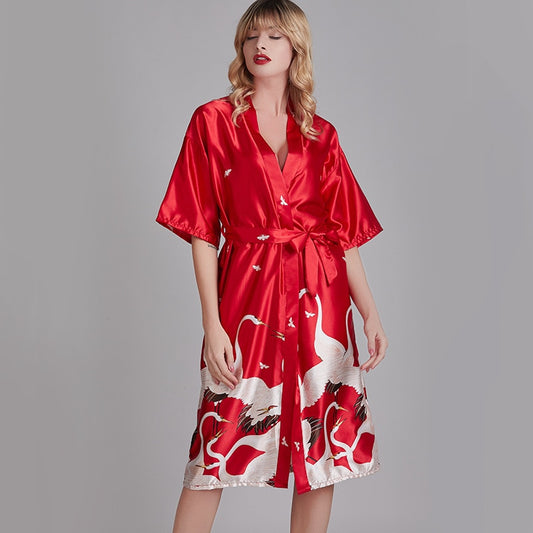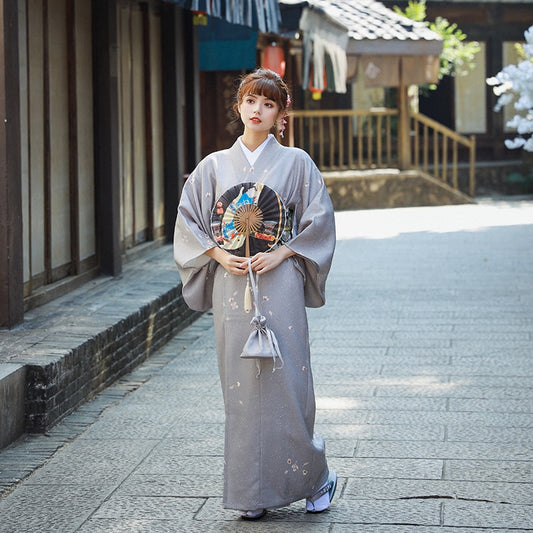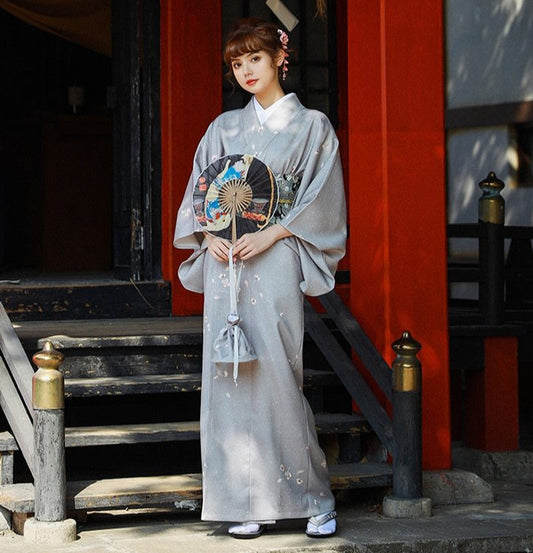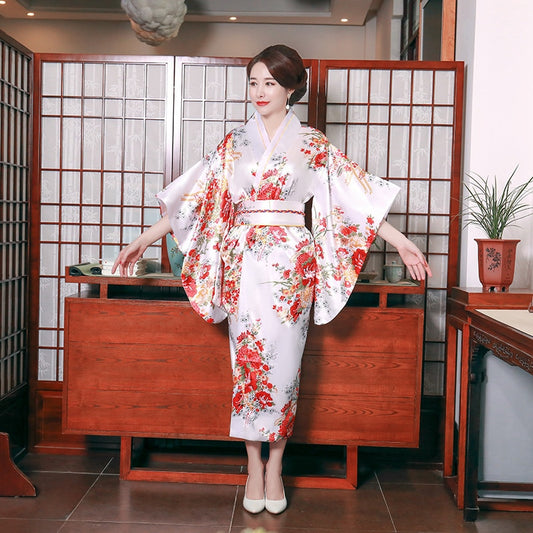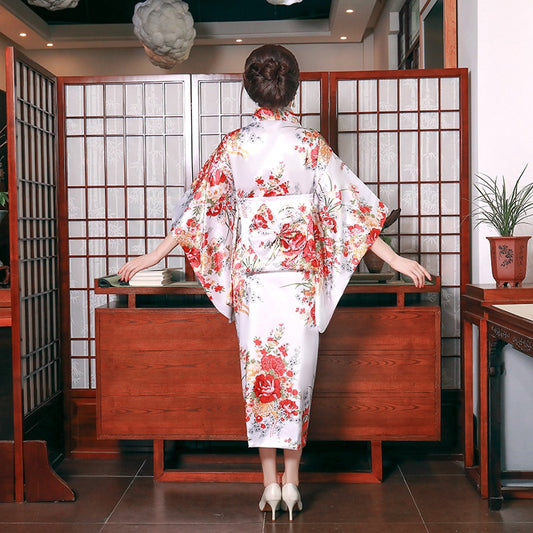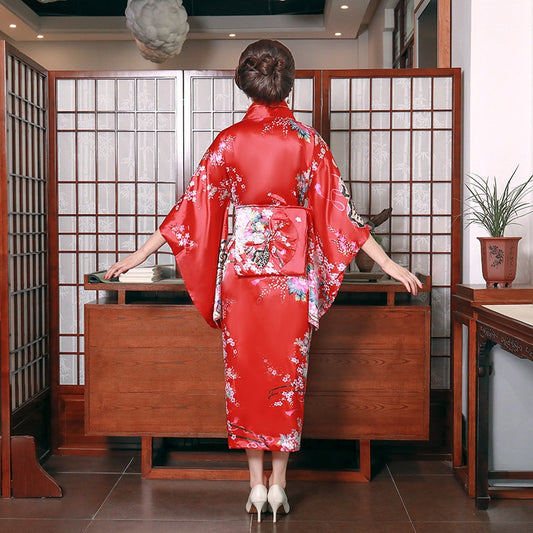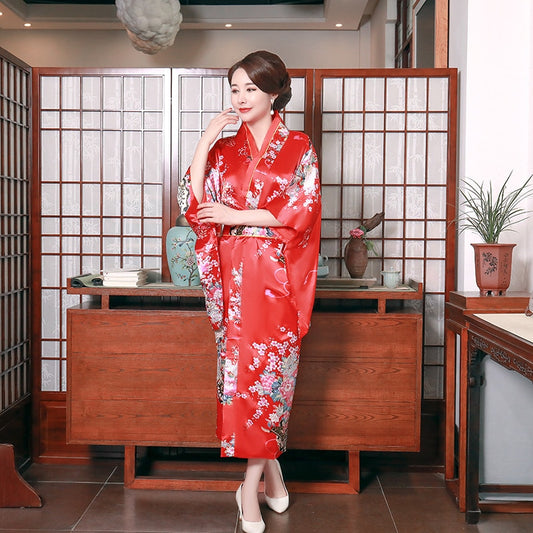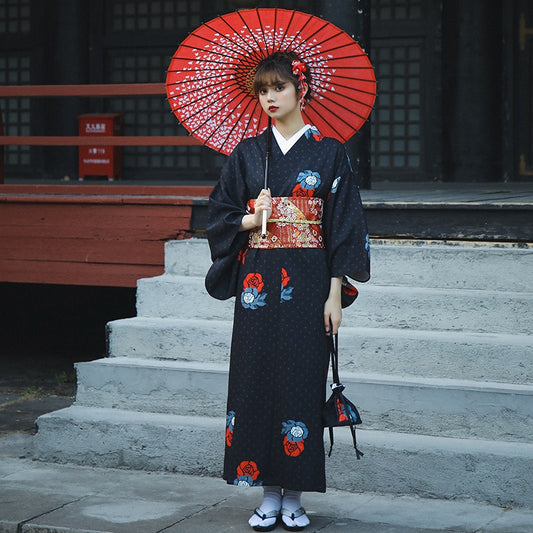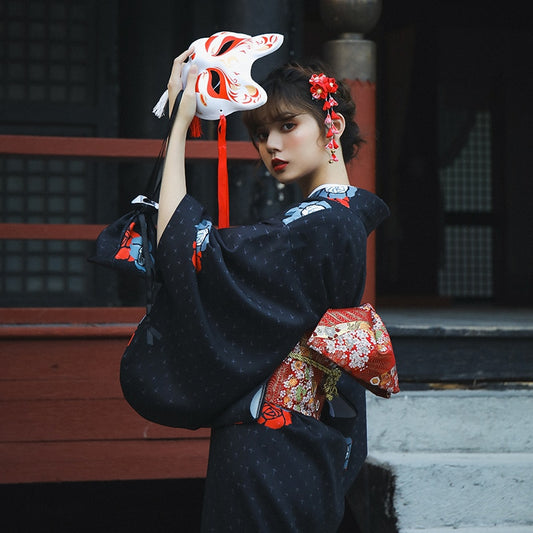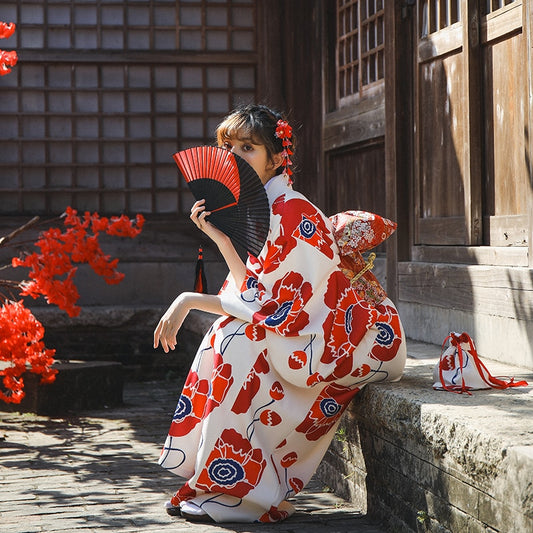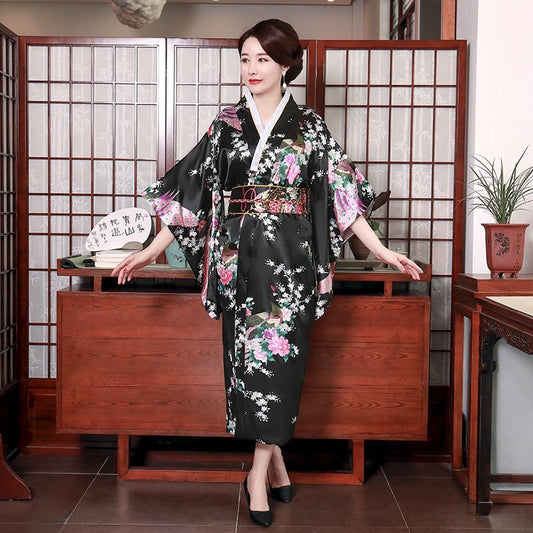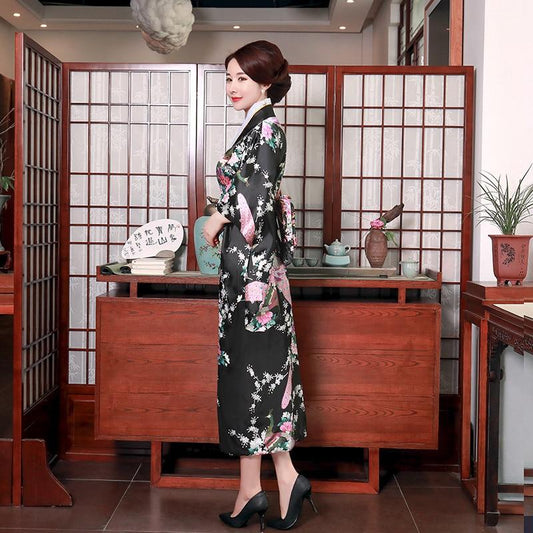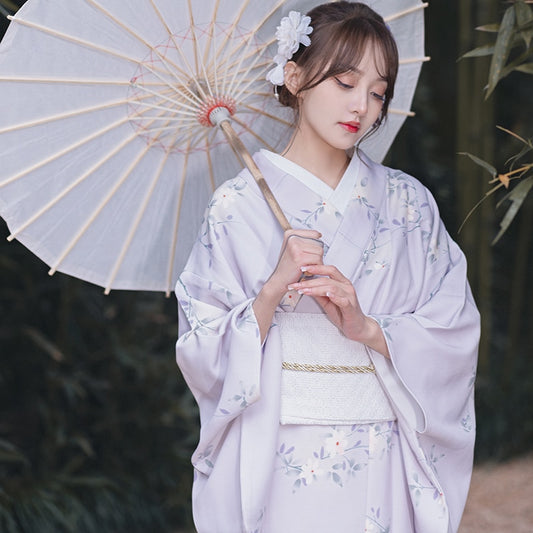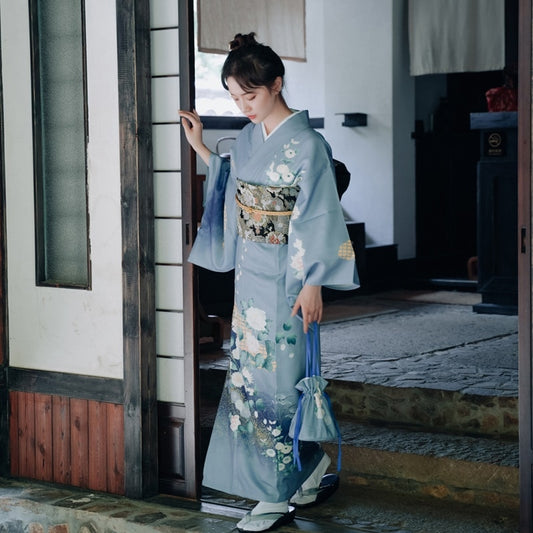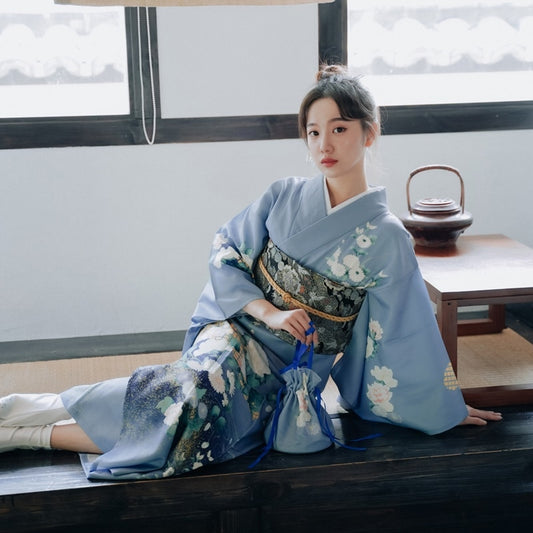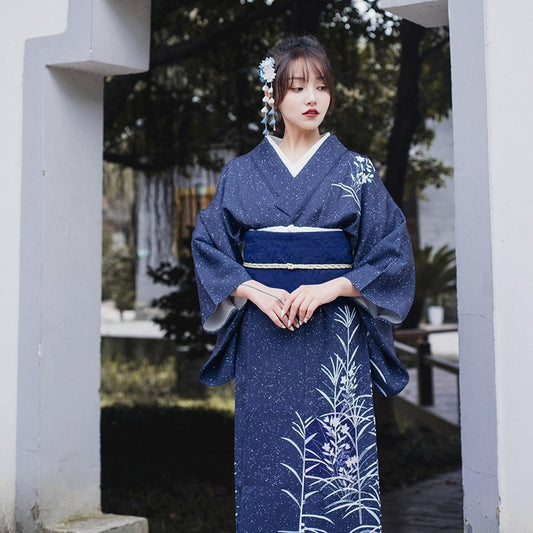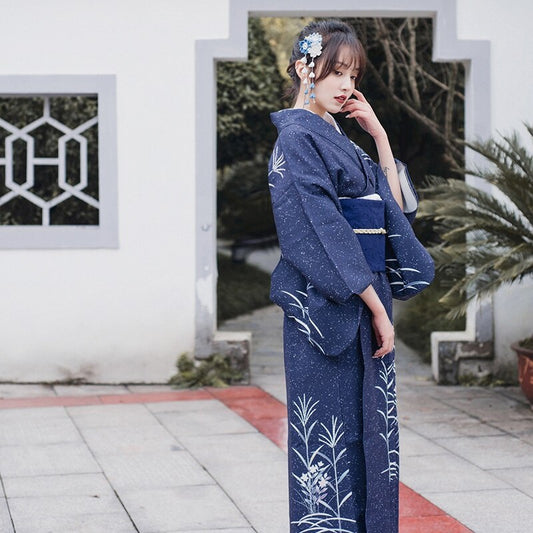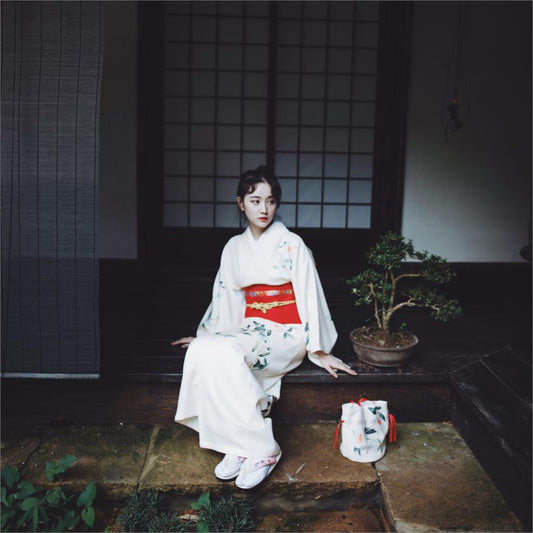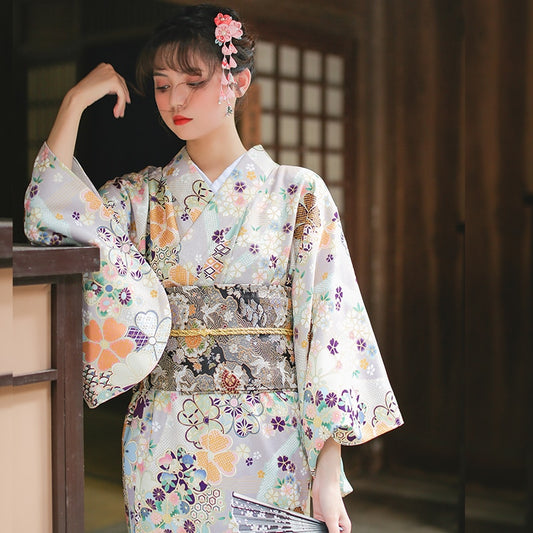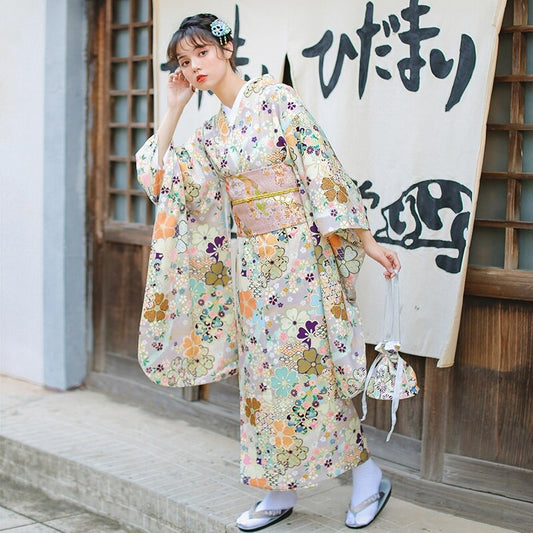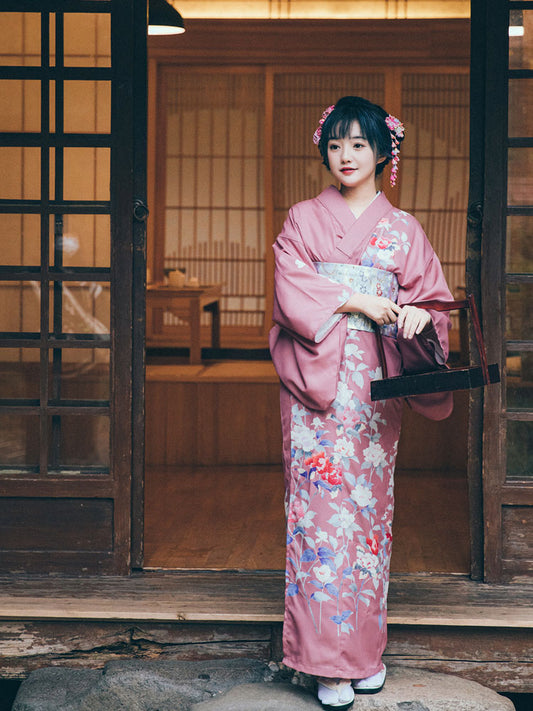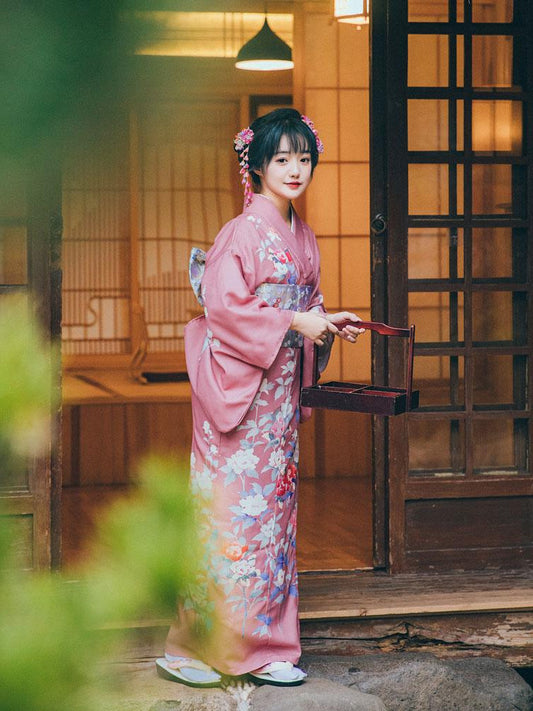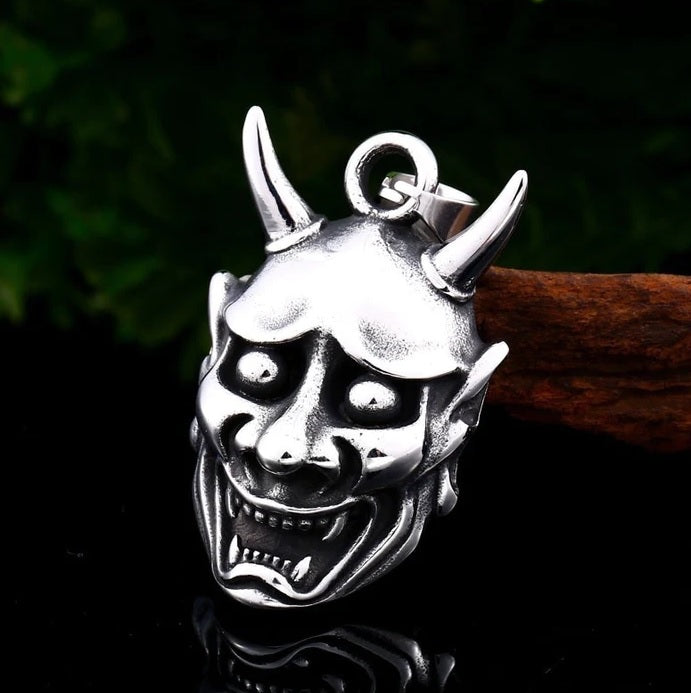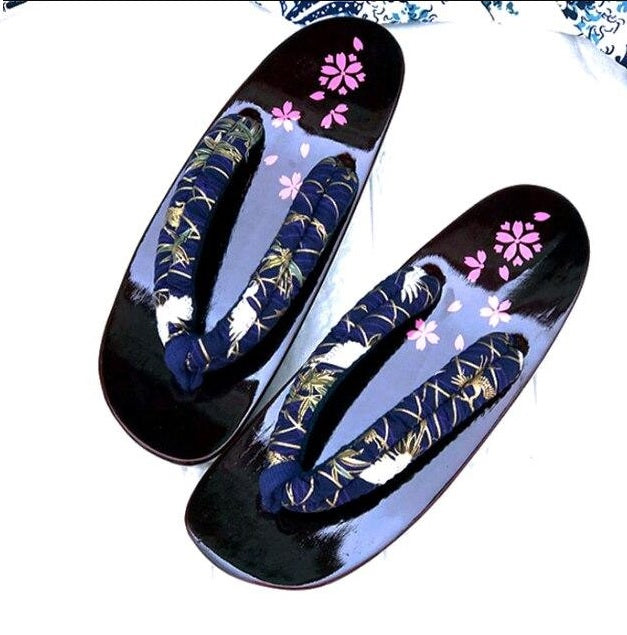-
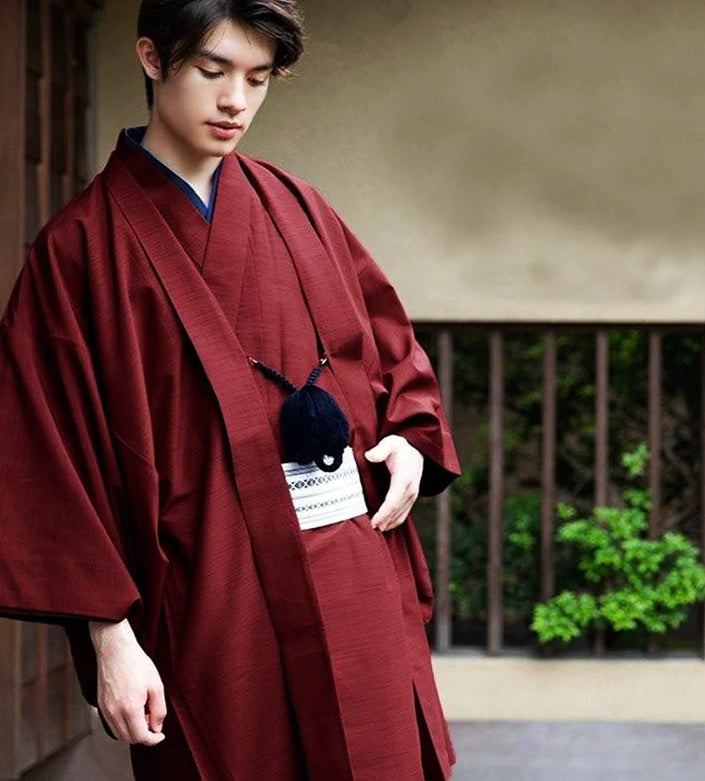
Men's Kimono
Kimonos men are becoming more popular since various famous Japanese singers and...
-

Kimono Women
The "kimono" has been a staple in Japanese culture for centuries. It...
-
Traditional Kimono Partywear
Regular price $210.99 USDRegular priceUnit price per$548.99 USDSale price $210.99 USDSale -
Long Sleeve Kimono Set
Regular price From $180.99 USDRegular priceUnit price per$452.99 USDSale price From $180.99 USDSale -
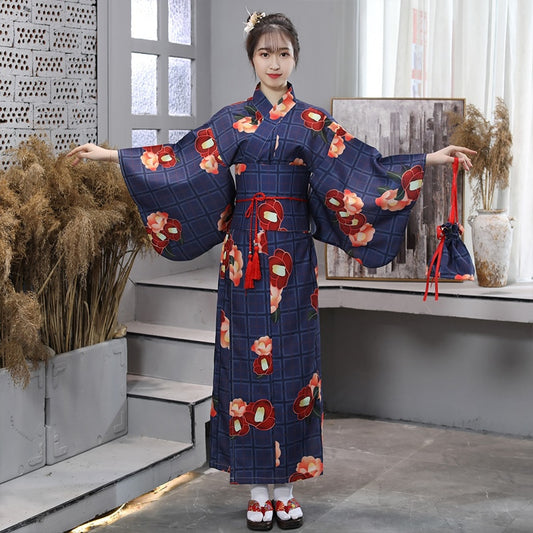
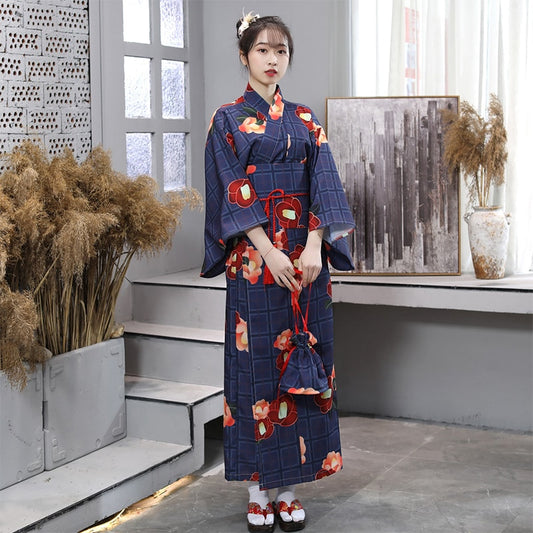 Sale
SaleKimono Partywear
Regular price $165.99 USDRegular priceUnit price per$414.99 USDSale price $165.99 USDSale -
Japanese Kimono Sleepwear
Regular price $50.99 USDRegular priceUnit price per$132.99 USDSale price $50.99 USDSale -
Kimono Beautiful Yukata
Regular price $180.99 USDRegular priceUnit price per$452.99 USDSale price $180.99 USDSale -
Japanese Kimono Festival Dress
Regular price $85.99 USDRegular priceUnit price per$223.99 USDSale price $85.99 USDSale -
Japanese Kimono Multicolour
Regular price $85.99 USDRegular priceUnit price per$223.99 USDSale price $85.99 USDSale -
Traditional Kimono Dance Costumes
Regular price $180.99 USDRegular priceUnit price per$470.99 USDSale price $180.99 USDSale -
Traditional Japanese Kimono Festivals
Regular price From $168.99 USDRegular priceUnit price per$422.99 USDSale price From $168.99 USDSale -
Japanese Satin Kimono
Regular price $85.99 USDRegular priceUnit price per$223.99 USDSale price $85.99 USDSale -
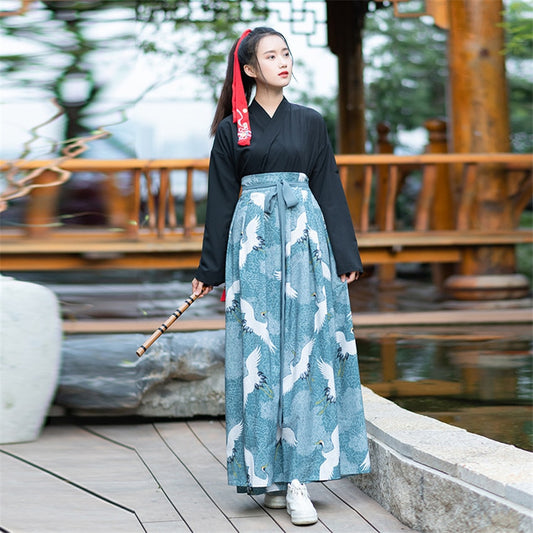
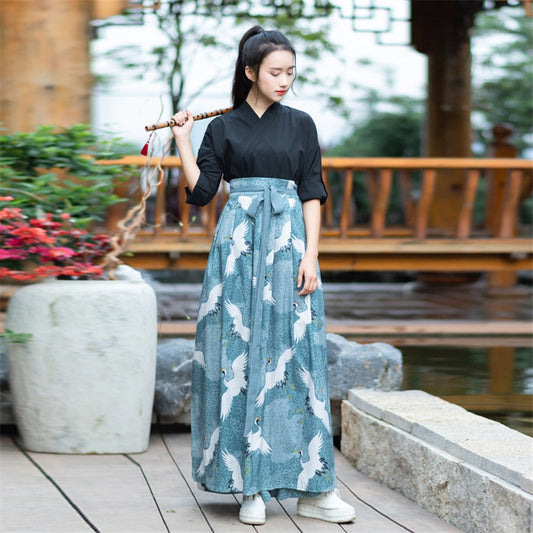 Sale
SaleKimono Party Dress
Regular price From $52.99 USDRegular priceUnit price per$132.99 USDSale price From $52.99 USDSale -
Traditional Floral Kimono
Regular price $165.99 USDRegular priceUnit price per$414.99 USDSale price $165.99 USDSale -
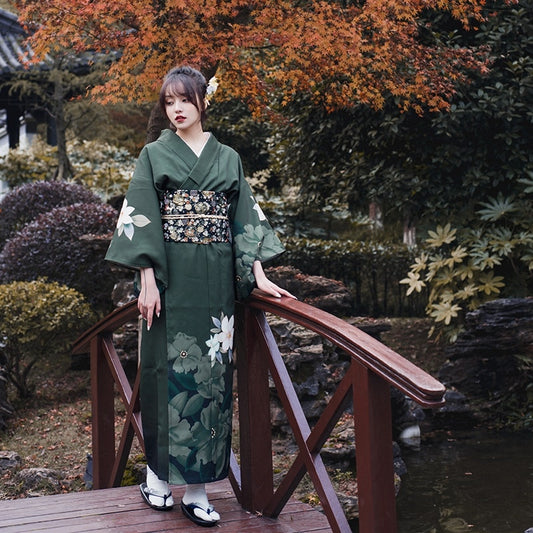
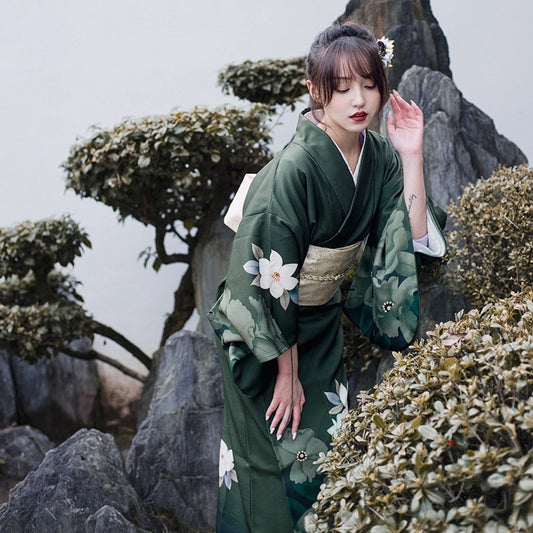 Sale
SaleKimono Female Yukata
Regular price $195.99 USDRegular priceUnit price per$509.99 USDSale price $195.99 USDSale -
Japanese Cosplay Kimono
Regular price $205.99 USDRegular priceUnit price per$514.99 USDSale price $205.99 USDSale -
Kimono Sakura Pattern
Regular price $210.99 USDRegular priceUnit price per$527.99 USDSale price $210.99 USDSale -
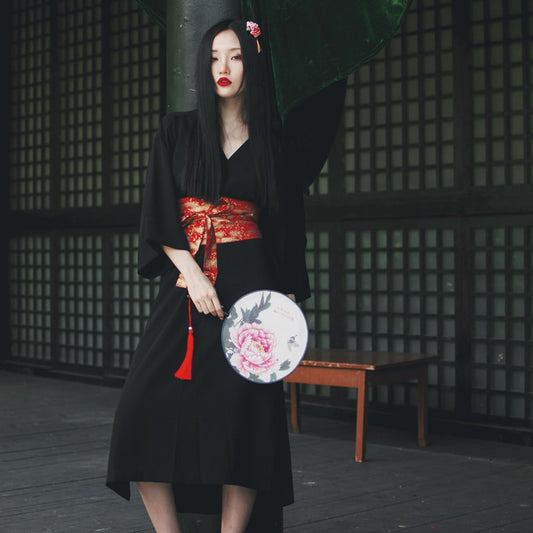
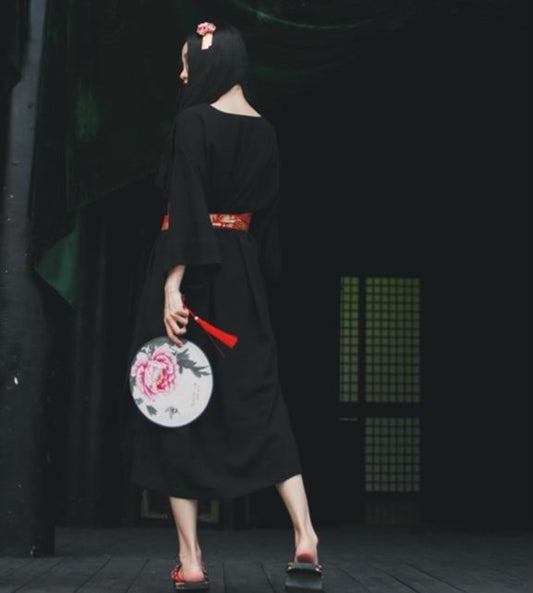 Sale
SaleModern Plain Kimono
Regular price $164.99 USDRegular priceUnit price per$412.99 USDSale price $164.99 USDSale -
Traditional Tokyo Kimono
Regular price $165.99 USDRegular priceUnit price per$289.99 USDSale price $165.99 USDSale -
Fashion Kimono Traditional
Regular price $155.99 USDRegular priceUnit price per$389.99 USDSale price $155.99 USDSale -
Traditional Kimono Party Wear
Regular price $135.99 USDRegular priceUnit price per$339.99 USDSale price $135.99 USDSale -
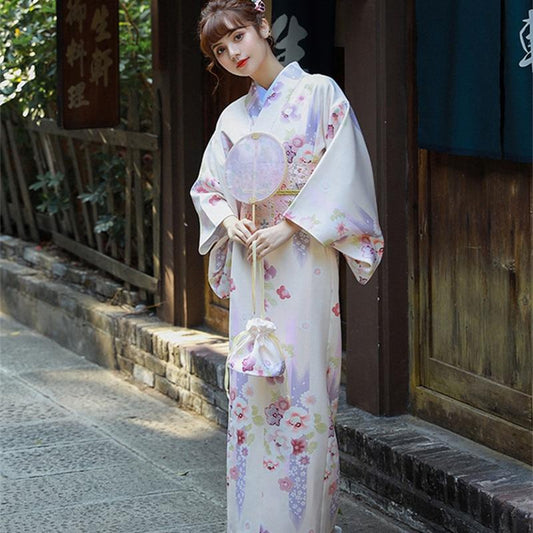
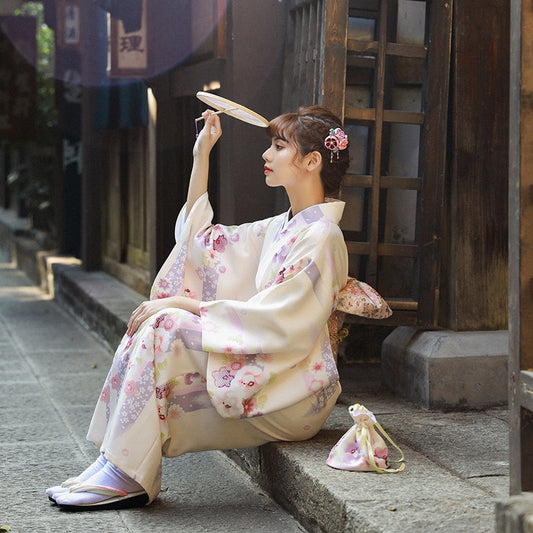 Sale
SaleKimono Beige Floral
Regular price $191.99 USDRegular priceUnit price per$479.99 USDSale price $191.99 USDSale
What is a Kimono Dress?
Kimono Dress is a Traditional Japanese Dress that's been around for centuries and has made its way to world fashion in quite a style. Kimono dress is probably the first thing that comes to mind when think about Japanese people and rightly so, because every Japanese person used to wear a Kimono before the world became global village. Kimono is typically a T-shaped shirt that comes in many different patterns, colors and fabrics. Different types of Kimono dresses are worn on different occasions and seasons such as white Kimonos are for brides and dark colored kimonos are worn in winter.
What does the word Kimono Mean?
The word "kimono" comes from a Japanese word (きもの - 着物) meaning "a thing to wear". The work Kimono is made of two words "ki" and "mono". Kimono is normally worn with a belt called obi (帯).
Where did Kimono come from?
The history of making of kimono has been traced back to 3rd century A.D when Japanese women wore sleeveless garment known as "Kantoi". Kantoi is considered to be the first illustration of a present day Kimono. Kantoi was developed further into a Kosode (小袖) which is the immediate predecessor of Kimono. Kosode was a simplified form of kimono which was worn by every Japanese person in Edo period.
Kimono officially came into existence in Meiji Era and Kosode was marked obsolete. Traditional Kimonos were typically made of silk and used patterns that have been passed on from previous generations. Traditional Kimonos had many layers and were not that easy to wear while modern ones are lighter and easier to wear.
The use of Kimono has slowly declined in Japan over the years and it is now kimonos are worn mostly on ceremonial occasions such as tea ceremonies, weddings, festivals or visiting historical places. However, there are still some people who wear Kimono on a daily basis for work or special occasions.
Parts of Kimono Dress:
Kimono dress consists of many parts that include:
• Hadajuban is the undergarment worn by men and women alike. It is a simple white cotton shirt that comes in many different sizes to fit everyone.
• Susoyoke is the undergarment that covers just the lower part of body.
• Koshihimo is the thin belt used to tie the kimono.
• Datejime is an optional band of cloth used to tie over the koshihimo.
• Obi is the wide belt worn around the waist over datejime.
• Obijime is a thin belt used to tie obi.
• Obiage is the rectangular piece of cloth worn under obi. It helps to keep everything in place.
• Tabi are the traditional Japanese socks traditionally worn with Kimono dress.
• Geta are Japanese wood sandals worn with Kimono on special occasions.
• Zori are thonged Japanese sandals worn with Kimono dress.
What are the types of Kimono?
There are many different types of Kimonos worn on different occasions and festivals in Japan.
1. Furisode:
Furisode literally means "swinging sleeves". It's a long-sleeved Kimono worn by young women. It's the most formal type of Kimono and is normally worn to graduations, coming-of-age ceremonies or New-year ceremonies.
2. Yutaka:
Yutaka is a short-sleeved Kimono typically worn by men. Its casual, informal and is perfect for summertime. The fabric is lightweight and the overall style is less formal than other Kimono styles. Yutaka is typically worn at informal gatherings, such as BBQs or outdoor parties, or when doing light work around the house. It can also be worn for travel, as it doesn't take up much space and is easy to pack.
Yutaka comes in a wide variety of colors and patterns, the most common being stripes and plaids. It is also available as a reversible style, with two distinct patterns on each side. Most Yutaka use plain material rather than patterned fabric for the main body of the garment.
3. Mofuku:
Mofuku is the mourning dress worn by both male and female on funerals. This is worn in combination with other accessories . Mofuku is a complete plain back silk garment with five crests over white undergarments and white tabi. For women, obi and other accessories are also black. Men wear a kimono of the same kind, with a subdued obi and a black-and-white or black-and-grey striped hakama, They also wear black or white zori with it. The completely black mourning clothes is for family and those who are close to the deceased.
4. Houmongi:
Houmongi is a type of kimono that is worn for special occasions such as weddings and graduations. It is made of silk and typically has colorful patterns & designs. It is a semi-formal kimono & is worn by both married and unmarried women. Houmongi is also called visiting wear. It has decorative patterns around the hem and sleeve and sometimes up the body of the kimono.
5. Tomesode:
Tomesode kimono is worn by married women. It is highly decorated with detailed, colorful patterns consisting of flowers and birds. These patterns are only on the bottom and crests on the sleeves and shoulders which are embroidered onto the silk base of the fabric. The garment includes five crests over layers of white undergarments. Obaasan must wear tabi (traditional Japanese socks) with her tomesode, while most other people do not need to.
Tomesode kuro (黒, black) and iru (色, colored) are the two types of Tomesode Kimono. The most formal type is kuro tomesode, which always has five crests. They can be worn at formal events like weddings. Iro tomesode does not have a specific base color other than black and may have one, three, or five crests.
6. Uchikake:
Uchikake is a type of kimono that is worn by a bride on her wedding day. It is the most formal type of kimono, and is typically very colorful and ornate. The uchikake is usually very long, and often trails on the ground behind the bride as she walks. It is generally very colorful and heavily decorated with patterns and designs. The uchikake is not a traditional part of the Japanese wedding dress code, but has become increasingly popular in recent years. This is basically a sort of coat & usually comes in full Red or White color. It is usually worn outside the original Kimono & doesn't need to be tied with Obi.
7. Komon:
Komon Kimonos are more casual than haori and obi for informal gatherings, such as walking around town or relaxing at home. They seldom include kamon (crests), which adds formality to the look. Some komon can be considered semi-formal depending on the pattern and cloth used. Silk and synthetic fabrics are considered less casual than wool because of gold or silver accents on the motifs and accessories choice. These Kimonos are worn by both married & unmarried women. It usually has design pattern on entire kimono without any specific direction.
8. Tsukesage:
Tsukesage are low ranking formal wears. The majority of tsukesage are designed such as wrap around the lower hem of the kimono and is seen on the sleeves and shoulders, typically on the back of the right sleeve and shoulder, and front of the left sleeve and shoulder. It has 5 crests over layers of white undergarments, and it is worn with tabi (in the case of women) or geta (in the case of men).
9. Susohiki or Hikizuri:
The susohiki is worn by geisha and traditional Japanese dance stage performers. It's longer than a regular kimono because the skirt is meant to trail on the floor. The length of this kimono may range from 200 to 230 cm (79 to 91 in). Susohiki differs from normal Kimono not only in terms of size but also they way in which they both are worn. Regular kimonos are tied with a visible ohashori whereas Susohiki is tied with a small ohashori that is first covered with a momi & then with obi that makes ohashori invisible.
10. Odori Katamigawari:
Odori Katamigawari is a specific sort of kimono worn during Japanese festivals. Odori, meaning "dance" and katamigawari, which means "half and half" are the words that make up the name ("half one design and half another"). These are generally worn by dancers and entertainers. They're typically made of synthetic fabric, so they may be washed frequently. Because the unlined kimono keeps the person cool, it is commonly used in summer but also helps to keep the garment less expensive than those with lining. These Kimonos have very bright colors & beautiful design patterns. They are very comfortable to wear & are still commonly used in Japan.
11. Shiromuku:
The shiromuku is a traditional wedding dress worn by brides from the samurai tribes. It's a distinctive white gown that stands out among all other kimono wedding dresses. The popularity of the shiromuku stems from its purity symbolism, which represents purity, or virginity. Shiromuku's other accessories are all white. Wataboshi is one of the most significant pieces of Shiromuku kimono clothing.
12. Iromuji
Iromuji kimono is a single-colored kimono that isn't black. Black Kimonos are only used in mourning occasions. Other than black, any other solid color can be used for these kimonos. They are really useful, especially for young ladies who wear it at their graduation ceremony, as well as for the occasion of a family gathering, not just because you can wear gray or a quiet blue outfit on a condolence visit.
FAQs about Kimono
What is Kimono?
Kimono is a traditional Japanese dress. The standard form of kimono includes a long-sleeved, ankle-length garment with a V-shaped opening at the front, secured by a sash called an obi. A kimono is typically made from silk or cotton, and it wraps around the body like a robe. Kimonos are often decorated with elaborate designs and patterns. The kimono is one of the oldest forms of clothing in the world. Kimonos are often worn by women and men on special occasions such as weddings or formal events.
What does the Japanese Kimono represent?
Kimonos were once only worn by the upper classes of Japan. As years pass, Kimonos became popular throughout all classes and become known as the symbol of Japanese culture. The Kimono has been created not only with the use of colorful fabrics but also with beautiful designs of stylized plants and flowers. The Kimono also shows the Japanese value of aesthetics, harmony and respect for nature. Symbolically speaking Kimonos represent Japan's history as a country. The Kimono represents the Japanese people because it is an emblem of their culture, tradition and values that are handed down from generation to generation dating back to ancient times.
When was Kimono Invented?
The Kimono was invented in ancient China during the first century BC. Thanks to its practical design, Kimono became popular throughout Japan in the 16th Century. Kimono has now become a Japanese traditional attire that consists of several layers of clothing including an inner robe, outer robe, and sash. Kimonos are usually worn by women but they are also worn by men on special occasions such as weddings or coming-of-age ceremonies. Kimonos for men were originally worn only by nobility but today they are available for everyone to wear.
Use of Kimonos in Different Seasons:
Different types of Kimonos are used in different seasons. Kimonos in the summer are made of thinner fabric while Kimonos in winter are made thicker for added warmth.
In summers the most common colors of kimonos are light blue and white. Kimonos made of light cotton fabric are worn during summer season to keep cool and comfortable. Kimonos come in other colors as well such as dark blue and black but those two colors are not used for summer Kimonos.
In winters, the common colors of kimonos are black and red. Kimonos are made of thicker fabric to provide warmth during winter season. Kimono come in different colors but black, brown or purple are the least used by the Japanese people due to their association with death.
What’s included in a Traditional Kimono?
There are several elements involved when wearing a kimono. Kimonos are made of silk or cotton fabric. A traditional Japanese Kimono consists of following basic elements:
- Kimono (inner robe): This is the main Kimono Dress that is worn with other essential elements.
- Obi (sash): This is the outermost sash that is used to tie the Kimono. There are many stylish knots that can make the kimono dress look more elegant.
- Koshi-himo (sash): This sash is used to keep the Kimono in place
- Juban (undergarment): This is the special type of undergarment that is worn under Kimono to keep it clean from body sweats & odors.
- Datejime (belt): This is a belt that is tied over the kimono. It keeps the Kimono in place & upon this belt obi is tied with stylish knots.
- Tabi (Socks): These are specially designed socks that are worn with the Kimono.
- Geta or Zori (Footwear): These are the 2 types of footwears that are used with different types of Kimonos wisely.
Why Japanese Kimonos are so expensive?
Japanese traditional kimonos are extremely expensive because they are hand made in small quantities using traditional techniques so they cannot be mass produced. The reason behind is that the layered structure of Kimonos doesn't allow machine production.
Woven and dyed kimonos are typically handmade with great care and go through the hands of several artisans on their path to completion. The process needs an extensive production time & effort. That's why the Kimonos ultimately become expensive. Moreover, the materials used to produce kimonos such as hemp, linen, silk & some synthetic fibers are also expensive.
Who can wear Japanese Kimonos?
Japanese Kimonos can be worn by both Japanese men and Japanese women. There are many different types of Kimonos that are worn on different festivals & occasions. Kimono is a Japanese Traditional Dress & still some Japanese People wear it as daily life clothing.
Some special occasions to wear Kimonos are Wedding, Graduation Ceremony, Funerals, Tea Ceremony, Coming of Age Ceremony, Summer Festivals etc. Kimonos are usually worn by both married & unmarried women.
Can foreigners wear Japanese Kimonos?
Foreigners in Japan can also wear Japanese kimonos, however there are strict guidelines for them on wearing Japanese kimonos. The Japanese people love their culture & tradition so they seek for perfection when a foreigner wears their traditional dress. The Japanese people adore sharing their culture with other countries.
Kimono and yukata are two of the most popular presents given to foreign visitors to Japan. Also there are different Kimono rental shops who provide the Japanese Kimonos & Accessories to foreigners on rent so that they may taste the Japanese Culture. This shows the Japanese People's love for their culture.
See Our Other Best Selling Products Also
-
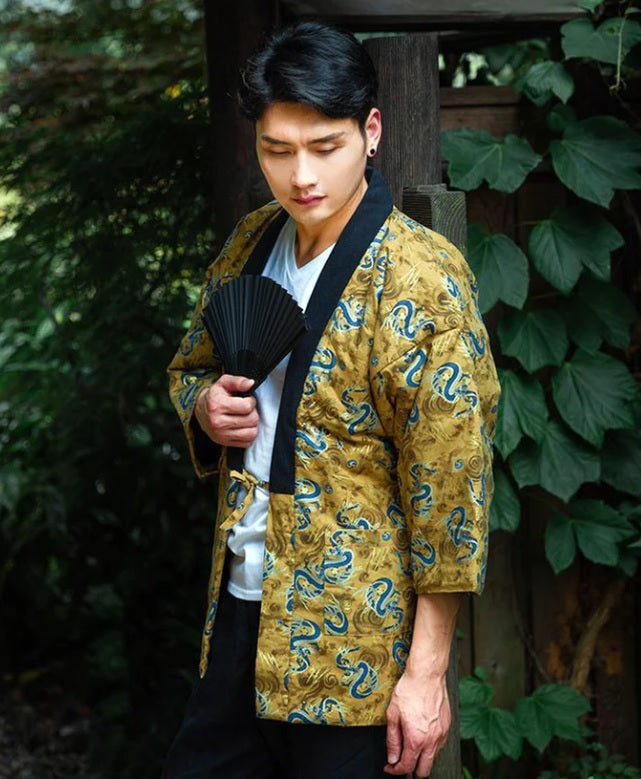
Hanten - The Japanese Hanten Jackets or Hanten Coats
What is a Japanese Hanten Jacket? The Hanten jacket, also known as...
-
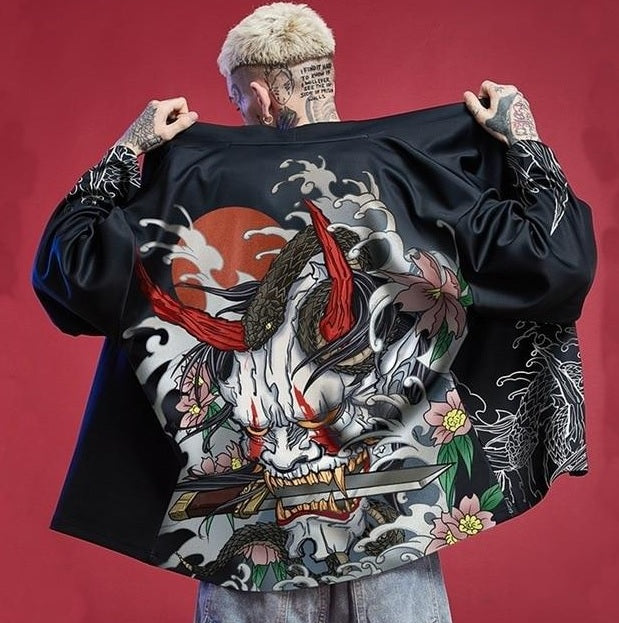
Buy a Haori - Traditional Japanese Haoris - Upto 50% OFF
Haori (羽織) is traditional Japanese Kimono-styled jacket with no collars, and broad sleeves. They...
-
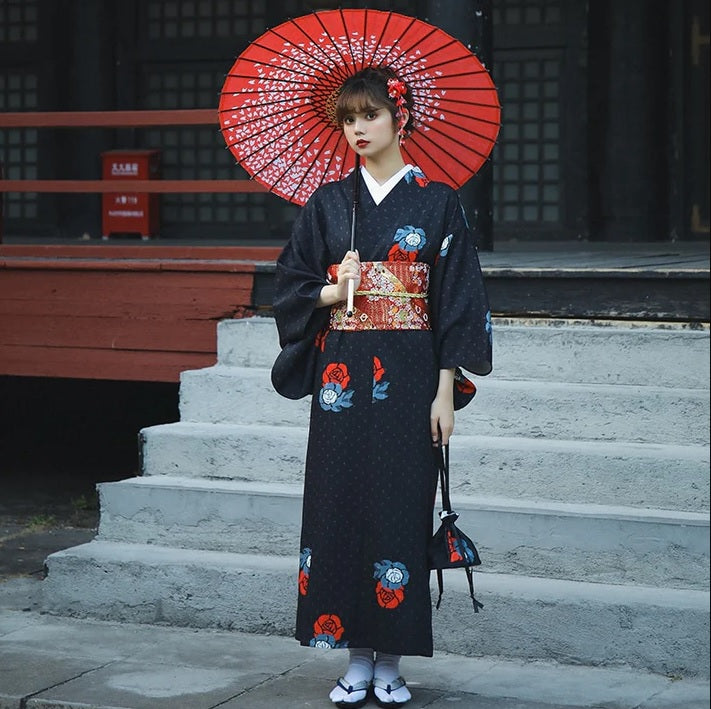
Kimono - Traditional Japanese Kimono Dresses
What is a Kimono Dress? Kimono Dress is a Traditional Japanese Dress...





